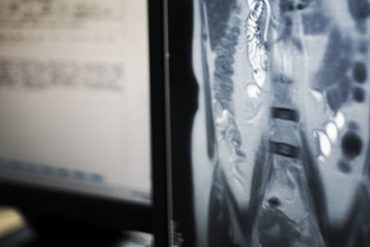Osteoarthritis, a form of arthritis, is a health condition attributed to inflammation in the joints. Osteoarthritis can affect people of all ages, and is seen in around eight million people in the UK.
The most common type of arthritis, osteoarthritis is commonly seen in people over 40 years old, and is more likely to develop in women. It can also develop as the result of an injury or other inflammation-related condition.
Symptoms
Symptoms of osteoarthritis usually come and go in bouts, and may be related to external factors such as weather and activity level. The severity of symptoms also varies from person to person.
The most common symptom of osteoarthritis is pain and stiffness in a joint, or joints, and can cause a loss of mobility and functioning.
Symptoms may include:
- Pain
- Stiffness
- Grinding and grating feeling in the joints when you move
- Muscle wasting (muscular atrophy)
- Enlargement of joints
Any joints can be affected by osteoarthritis, but most commonly the knees, hips, neck, back, base of the big toes and hands are affected.
Usually both knees will be affected, with the exception of osteoarthritis which has been caused by an injury. Knee pain will most likely be experienced when walking upstairs or hills. Your knees may lock up or give way underneath you, potentially causing you to fall over.
Osteoarthritis of the hips is very common, and can affect one or both of the hips. Pain is usually felt at the front of the groin, and down the front and side of the thigh. Pain will usually be noticeable when you move your hips, either by standing up or bending over.
Osteoarthritis of the hands usually occurs due to nodal osteoarthritis, which is inherited. It affects the joints at the ends of your fingers and the base of your thumbs. To begin with, it makes your hands quite sore. After a few years, Heberden’s nodes – which are hard swellings that form on the knuckles of the fingers – become fully formed, at which point pain usually subsides.
Causes
When we go about our daily lives, standing, walking, driving, typing, sports and other day to day activities can cause stress in our joints. Usually the joints have self-repair mechanisms in place, to stop the conditions becoming painful. If this occurs correctly, you won’t even know that your joints have been stressed and no symptoms will be experienced.
Osteoarthritis occurs when damage sustained in the joint fails to be repaired efficiently. [75] When this occurs, the cartilage, which is responsible for protecting the joints, can be worn down, and is replaced by bony growths. This causes inflammation and swelling.
Risk factors for osteoarthritis include:
- Joint injury
- Age: the risk of developing osteoarthritis increases as you age [76]
- Family history: although no specific gene has been identified as being responsible, inheritance is thought to play a role in the development of osteoarthritis [77]
- Obesity [76]
Diet for osteoarthritis
No studies have successfully shown foods to be a cure for osteoarthritis, although they can help to alleviate joint pain, the main symptom of osteoarthritis. Losing weight can help relieve pain in weight-bearing joints such as the knees, spine and hips.
Due to the way the knee works, even walking across level ground puts more pressure on your knees. Factor in an incline, and the pressure per knee can be up to three times your own body weight. Therefore, losing small amounts of weight can go a long way. In addition to this, excess body fat increases inflammation, and may exacerbate joint pain.
Weight loss can be attained through the implementation of calorie restriction and exercise. Exercising when you suffer from osteoarthritis can be difficult due to pain, but as long as the balance of exercise and rest is correct, it is a tremendous tool that can relieve pain and help you to stay mobile. Yoga, swimming, cycling and rowing are all low-impact, and will burn calories to help you lose weight while helping you to stay mobile.
Foods high in omega-3 fatty acids have been shown to reduce inflammation, which may help to ease the symptoms of osteoarthritis. [16] Oily fish such as salmon, tuna, sardines, halibut, bass and mackerel all contain large quantities of omega-3 fatty acids.
Nuts and seeds such as almonds, pecans, walnuts, brazil nuts, cashews, flax seeds, chia seeds, hemp seeds, sunflower seeds and sesame seeds contain inflammation fighting omega-3 fatty acids. They are also rich in fibre, vitamin E and various other vitamins and dietary elements which are essential for healthy functioning.
Eating cruciferous vegetables in abundance has been shown to protect the body from cytokines, which are a pro-inflammatory substance.
Eating foods that are high in antioxidants has been shown to have anti-inflammatory effects. Foods high in antioxidants include strawberries, tomatoes, acai berries, oranges, cherries, blueberries, dark (raw) chocolate, artichoke and kidney beans.
It may be helpful to avoid processed meat and eggs that contain large quantities of omega-6 acids, because these can increase inflammation, and may intensify symptoms. Also, reducing refined carbohydrates and simple sugars, and instead consuming fibre-rich whole grains such as brown rice, bread and pasta, has been shown to reduce C-reactive protein levels, an inflammation marker in the blood.




